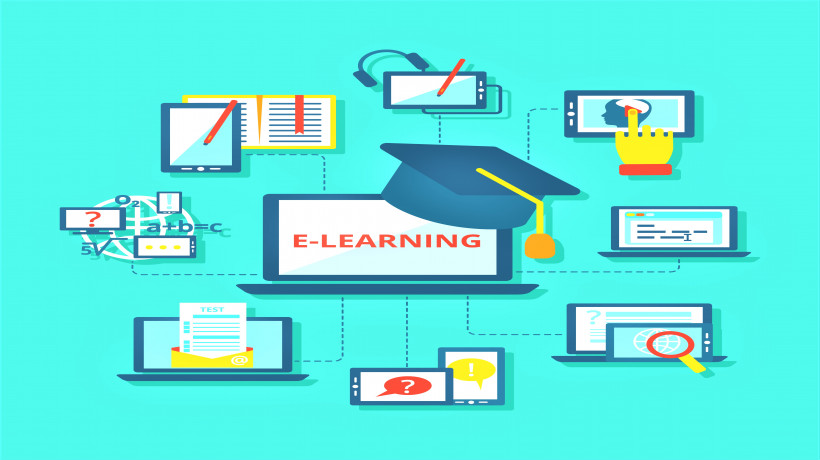E Literate What We Are Learning About Online Learning
E-learning literacy, also known as online learning skills or e-learning skills, etc., refers to skills, knowledge, attitudes and behaviour sets that are necessary to participate in online learning programs and classes. Check out Blog now for more insight!
January 10, 2022

Career Expert & Blogger

Learnings from Online Learning
-
Career advancement and hobbies. Studying online gives you more flexibility.
-
Flexible schedule and environment.
-
Lower costs and debts.
-
Self-discipline and responsibility.
-
More choice of course topics.
How do online classes help students?
-
Work from anywhere, at any time.
-
Review lectures instantly.
-
Less intimidating.
-
More time to think before sharing.
-
Focus on ideas.
-
Group communication.
-
Flexible learning schedule.
-
Cost.
-
Upskilling is Becoming Increasingly Necessary.
-
Self-Paced Learning.
-
Online Learning Helps Us Stay Relevant in a Quickly Changing World.
-
E – Learning is Resource Efficient.
-
Online Learning is More Accessible to All.
What is e learning advantages and disadvantages?
Well, there are not many disadvantages of eLearning, the main one being that you get knowledge only on a theoretical basis and when it comes to putting to use whatever you have learnt, it may be a little different. The face-to-face learning experience is missing, which may matter to some of you.
Another advantage of online learning is reduced financial costs. Online education is far more affordable as compared to physical learning. This is because online learning eliminates the cost points of student transportation, student meals, and most importantly, real estate.
How does online education affect society?
Another significant impact that online education has on society is the ability for online education to adapt to students with different learning styles. Being able to adjust to different teaching styles, also gives the opportunity to teachers to create online -assessments for their students.
Is online teaching effective?
Online teachers will need to consider the needs of less-engaged students and work to engage them. Online courses might be made to work for these students on average, even if they have not in the past. Online courses are generally not as effective as in-person classes, but they are certainly better than no classes.
“E-learning literacy (or e-learning competency) measures the extent to which someone is able to participate in e-learning activities. In this article we define e-learning in a wide perspective, i.e. including all forms of digital learning such as rapid e-learning, academic conversational blended learning, MOOCs, interactive multimedia, classroom technology, etc.”
“E-learning programs often fail in one way or another to meet expectations. One of the reasons could be the lack of what we could call e-learning literacy. Another reason, is that e-learning often is used as an opportunity for changing learning goals, for example put more emphasis on "deep learning", which asks more from learners.”
“E-learning literacy, also known as online learning skills or e-learning skills, e-learner competency, e-learning readiness, distance learner competence, blended learner competence, etc., refers to skills, knowledge, attitudes and behaviour sets that are necessary to participate in partial or full online learning programs and classes. Hong and Jung (2010) define distance learner competencies’ “as knowledge, skills and attitudes that enable a person to be a successful distance learner [...] A successful distance learner is operationally defined as a distance learner who has completed distance courses at least three semesters, with above average grades”. This definition also could be used to defined competency for blended learning.”
E-learning literacy comprises several literacies, for example:
-
Digital literacy (or literacies), e.g. computer literacy and information literacy
-
Metacognitive literacy, defined as metacognitive skills, in particular appropriate learning strategies and Self-regulation and planning skills
-
Academic integrity competence, e.g. plagiarism
E-learning is strongly related to flexible and distance learning and the skills required to follow a contemporary online or blended class are e-learning skills. According to Hong and Jung (2010),
Sometimes e-learning competency is negatively defined as part of "barriers to e-learning". E-learning competency is also addressed in the large literature on e-learner satisfaction, e-learning management, etc. and is treated as of type of explanatory variable. Seen in a wider context, e-learning competency does not by itself predict success. Other variables such as various personality traits, the learning environment, etc. intervene. A probably important personality trait is grit.
Differences between Traditional Literacy and Digital Literacy
When you think of traditional literacy, reading and writing come to mind. Learning phonics, sight words and eventually, reading literature. Today, students need more than the written word to succeed in elementary school, high school and continued education. Digital literacy expands the scope of traditional literacy. It encompasses e-learning skills that incorporate audio and video for strengthening thinking and learning in students.
When combining digital and traditional literacies, not only do students learn how to read and write, but they also learn how to expand their communication, language and media skills. They grow and engage the world through images, diagrams, audio and video media, taking their reading and writing skills to a higher level of learning. They also develop dynamic creativity that helps them think, communicate, design and engage in the world around them.
Building Communication and Literacy Skills with Digital Media
It’s important that educators expand their ideas about literacy. Children in grades K-12 adapt to technology naturally, making it the best time to teach Internet technology skills. It’s the time for them to create relationships between the written and visual word for better communication with others.
Communicating through pen and ink is a lot different from communicating in the technological, visual world where children need to be aware of appearance, gestures, and the tone in which they speak. These qualities don’t matter in printed material, but they’re essential skills that student need to learn for effective communication today.
Traditional literacy is all about learning nouns, verbs, sentences, grammar, and reading and writing text. By taking a broader look at digital literacy, implementing technology in the classroom greatly enhances the learning experience beyond conventional literacy. This interactive visual media deepens understanding, thinking, and interpreting content, elevating your students beyond the confines of structured literacy.
What Have We Learned from Going Online?
For me, remote learning has meant trying to re-create the traditional classroom online. Remote learning attempts to reproduce the organization, materials and activities in a different physical space. For example, most schools have continued to organize teachers and students in class groupings and follow modified school schedules, trying to replicate traditional teacher and student interactions in “Zoom classrooms.”
Many teachers have been creative in their remote classroom practices and these educators are to be celebrated. Their efforts highlight the essential learning interactions. For example:
-
The importance of student-teacher relationships. Simple practices like greeting students and being authentic help to build these relationships, as this video celebrates.
-
The value of student-to-student interactions. Teachers have successfully re-created many of the small-group student learning structures that support collaborative and higher-level learning, as seen in these breakout room examples.
Such remote learning success stories reveal the power of teacher imagination and the importance of innovation when adapting to change.

